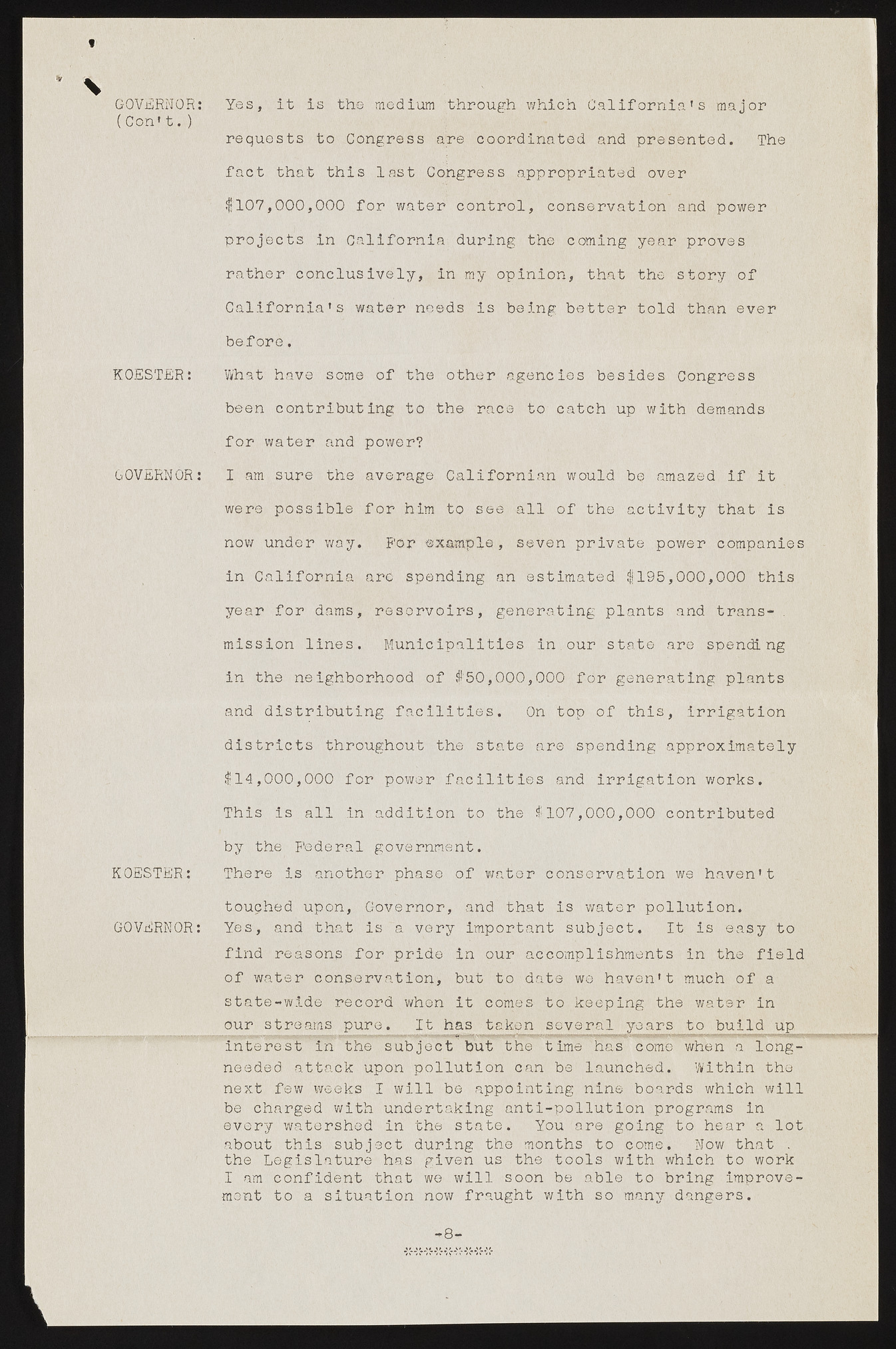Copyright & Fair-use Agreement
UNLV Special Collections provides copies of materials to facilitate private study, scholarship, or research. Material not in the public domain may be used according to fair use of copyrighted materials as defined by copyright law. Please cite us.
Please note that UNLV may not own the copyright to these materials and cannot provide permission to publish or distribute materials when UNLV is not the copyright holder. The user is solely responsible for determining the copyright status of materials and obtaining permission to use material from the copyright holder and for determining whether any permissions relating to any other rights are necessary for the intended use, and for obtaining all required permissions beyond that allowed by fair use.
Read more about our reproduction and use policy.
I agree.Information
Digital ID
Permalink
Details
Member of
More Info
Rights
Digital Provenance
Publisher
Transcription
GOVERNOR: (Con* t .) K O E S T E R : GOVERNOR: KOESTER: GOVERNOR: Yes, it is the medium through which California's major requests to Congress are coordinated and presented. The fact that this last Congress appropriated over $107,000,000 for water control, conservation and power projects in California during the coming year proves rather conclusively, in m y opinion, that the story of California's water needs is being better told than ever before. What have some of the other agencies besides Congress been contributing to the race to catch up with demands for water and power? I am sure the average Californian would be amazed if it were possible for him to see all of the activity that is now under way. For example, seven private power companies in California arc spending an estimated |195,000,000 this year for dams, reservoirs, generating plants and trans- . mission lines. Municipalities i n . our state are spending in the neighborhood of #50,000,000 for generating plants and distributing facilities. On top of this, irrigation districts throughout the state are spending approximately $14,000,000 for power facilities and irrigation works. This is all in addition to the $107,000,000 contributed by the Federal government. There is another phase of water conservation we haven't touched upon, Governor, and that is water pollution. Yes, and that is a very important subject. It is easy to find reasons for pride in our accomplishments in the field of water conservation, but to date we haven't much of a state-wide record when it comes to keeping the water in our streams pure. It has taken several years to build up interest in the subject but the time has come when a long-needed attack upon pollution can be launched. Within the next few weeks I will be appointing nine boards which will be charged with undertaking anti-pollution programs in every watershed in the state. You are going to hear a lot about this subject during the months to come. Now that . the Legislature has given us the tools with which to work I am confident that we will soon be able to bring improvement to a situation now fraught with so many dangers. 8 -

